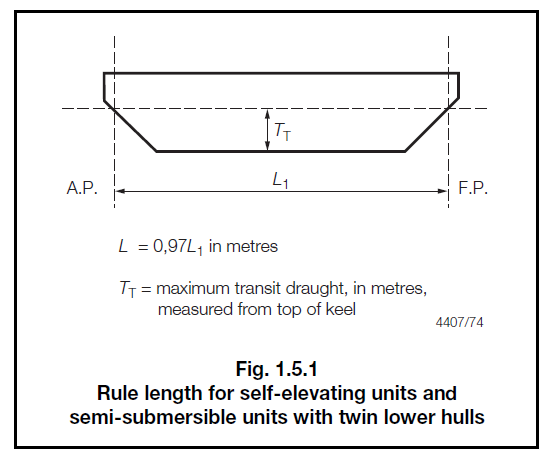Definition(s)
Rule Length
Rule length,
L, in metres, for self-elevating units and semi-submersible units with twin lower hulls is to be taken as 97 per cent of the extreme length on the maximum design transit waterline measured on the centreline or on a projection of the centreline, see Fig. 1.5.1.
 Source: Rules and Regulations for the Classification of Mobile Offshore Units, Part 4, Steel Unit Structures, June 2013, Lloyd’s Register, Global Standards
Source: Rules and Regulations for the Classification of Mobile Offshore Units, Part 4, Steel Unit Structures, June 2013, Lloyd’s Register, Global Standards
Rule Length
The Rule length,
L, for surface type units is the distance, in metres, on the summer load waterline from the forward side of the stem to the after side of the rudder post or to the centre of the rudder stock if there is no rudder post.
L is to be not less than 96 per cent, and need not be greater than 97 per cent, of the extreme length on the summer load waterline. In ships with unusual stem or stern arrangements the Rule length,
L, will be specially considered.
Source: Rules and Regulations for the Classification of Mobile Offshore Units, Part 4, Steel Unit Structures, June 2013, Lloyd’s Register, Global Standards